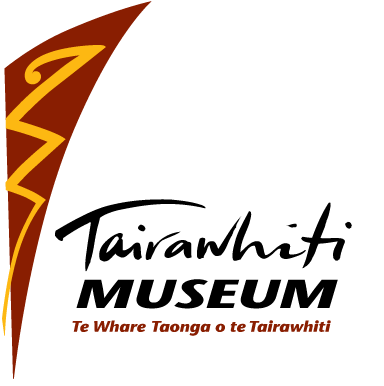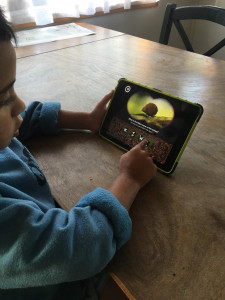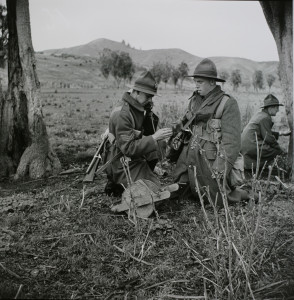Tairāwhiti WW2 Memories: Patriotic Knitting and Sewing
Tairāwhiti WW2 Memories: Patriotic Knitting and Sewing
The provision of knitted garments for the armed forces was a major undertaking. In November 1939, based on an estimate of the number of troops from the East Coast going into the Second echelon, women of the district were asked to knit 500 pairs of socks. Wool and instructions were to be supplied.[1] This project did not get off to a smooth start, as it was found that bulk wool for national distribution was not available. Committees were therefore told to obtain whatever they could locally.[2] This was not possible either and the initial scheme had to be abandoned. Instead, knitters were asked to make gloves for the RNZAF.[3] Bulk supplies were finally expected to arrive in January, and as well as the socks and gloves knitters were asked to contribute sleeveless cardigans, scarves and balaclavas.[4]However there were further problems with the supply of wool. By March, balaclavas had become the items most urgently required for the troops.[5]
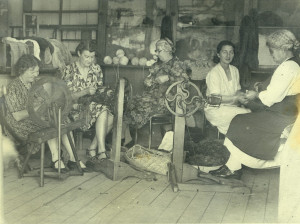
Women sewing for the war effort, 1940. l to r Mrs Galvin, Mrs Allan Holmes, Mrs Mainland Foster, Mrs R Keiha, Mrs Simpson 036-1-28
Meanwhile, the Joint Council of the Order of St. John and the New Zealand Red Cross Society had made an appeal for hospital and ambulance supplies as equipment for each echelon or reinforcement that left New Zealand. These included capes or jackets, bandages and binders, milk and sugar covers, socks, pillows, slippers, old flannel and linen pieces, gauze swabs and squares, and bags for hair brushes.[6]
An idea of the scale of contributions to these and other appeals can be gained by reading the monthly reports of the different women’s organisations. These were usually published in The Gisborne Herald and generally noted the patriotic work done by members. For instance, the report for April 1940 of the Gisborne branch of the Womens Division of the Farmers Union refers to assistance given to patriotic work, the sending of reading matter and Christmas cheer to the watch stations on the East Coast, the making and sending of clothes to refugee children, and catering for departing soldiers.[7]Country Women’s Institutes’ reports on the same date also contain numerous references to patriotic work, mainly in the form of gift parcels and knitting undertaken by the members.
In town, some of the established organisations formed sub-groups devoted to patriotic work such as the Victoria League patriotic sewing circle, or the knitting circles of the Poverty Bay Ladies Golf Club, the Gisborne Business and Professional Women’s Club[8], and the Gisborne Townswomen’s Guild[9]. Other circles were established according to where participants lived. Some of the names varied slightly over the years, and the emphasis could move between knitting or sewing, but groups were active at Pakowhai, Ormond, Muriwai, the Manutuke mission, Patutahi, Waipiro Bay, Te Hapara, Central, Whataupoko, Kaiti and Mangapapa.
It was found that one way to overcome the shortage of wool was for those in possession of spinning wheels to spin their own. In 1941 the Gisborne Wool-Spinning Circle decided to concentrate its efforts on providing woollen comforts for the crews of New Zealand minesweepers….. The Navy League has indicated that natural wool is preferred, and the articles turned out in Gisborne fill the principal needs of comfort and warmth. No dyed wools are used, the spinning being done from the greasy fleece. Stocks of fleeces made available to the circle are now running low, and further donations would be welcomed.[10]A year later the group, now known as the Gisborne Minesweepers’ Spinning and Knitting Circle put on a display of their work which included pullovers, sea boot stockings, balaclavas, socks and scarves knitted with wool spun from the fleece.[11]
The importance of the merchant navy as well as the New Zealand navy had been acknowledged earlier by the East Coast Patriotic Council, who decided that they would provide gift parcels or some other form of acknowledgement, to the officers and crews of overseas liners calling at Gisborne.[12]
Gift parcels were an important part of the civilian war effort, and the number of thank you letters published in the newspaper make it clear how much they were welcomed by the recipients. But the amount knitting which was being done is hard to comprehend, particularly bearing in mind that it was fitted in with the usual daily activities which were already more onerous because of wartime restrictions. For instance, in October 1940 the Tolaga Bay Ladies Patriotic Committee reviewed the work carried out by members in recent months.
As well as raising over £430 for patriotic purposes, members had contributed a total of 68 scarves, 123 pairs of mittens, 62 balaclavas, 77 pairs of socks, 44 caps for under tin hats, and 30 pullovers. In addition, one large package with an unspecified number of socks, mittens and scarves had been sent to the Navy League. The Toloaga Bay school children had contributed 44 scarves and 99 pillow cases to the Red Cross. The committee also donated
a bundle of linen for bandages, 148 hot water bag covers, 22 balaclavas. 122 eye bandages, 12 pairs of bed socks, one singlet, and one jumper. The assigned quota of 35 Christmas parcels had been achieved, and six large cases of clothing had been sent to the High Commissioner in London for distribution to those in urgent need.[13]
A knitting group at Te Araroa, with 40 members, has knitted up 1965 skeins of wool during 1941 and for the first few months its members used needles made of fencing-wire, owing to the difficulty of buying suitable needles at that time.[14]
In April 1942 the East Coast Provincial Patriotic Council was asked to organise the supply of 4400 pairs of socks, 1500 scarves, 1500 balaclavas, and 1500 mittens by the end of August. Those figures did not include the requirements of the Air Force or Navy.[15]
After Japan’s entry into the war, local organisations were asked to help with the making of camouflage nets, with 222 completed by June 1942.[16] In July the Te Karaka branch of the Lady Galway Patriotic Guild reported that 5 more had been made, and they had started on making papier mache splints.[17] Work on camouflage nets was suspended in November 1943, after the improvement in the Pacific situation. It was acknowledged that innumerable women, boys and girls have willingly done a very dirty and hard job without payment and often to their own personal disadvantage and inconvenience.[18]
Knitted and sewn garments were required not just for the troops, but also for refugees. This work got underway in 1939 under the auspices of the Joint Council of the Order of St. John and the New Zealand Red Cross Society. One of the first groups to donate was the Gisborne Townswomen’s Guild, who contributed four large cases of clothing,[19] which was forwarded for the use of Polish and Jewish refugees.[20] In February 1940 the emphasis was on the plight of the civilian non-combatants of Finland whose plight had been exacerbated by the intense cold which has swept Europe. Seven packing cases of reconditioned clothing and 33 quilts had been provided, but more were needed.[21]
The Waipiro Bay Ladies Sewing Circle dispatched clothing to London for Polish and Belgian refugees,[22] and the Victoria League regularly sent clothing to Britain for distribution in areas which had been bombed.[23] In 1940 Lady Galway ((wife of the then Governor-general) established the Lady Galway Patriotic Guild, for the purpose of providing clothing and comforts for refugees in Great Britain.[24] Over the next six years the Gisborne branch sent over 300 cases to Britain. It was estimated that these contained a total of 60,000 garments. Due to the scarcity of new clothes, most of these were second hand, and had been repaired and reconditioned before being sent. Quilts were also included in the shipments, 200 of them made by a single needlewoman.[25]
[1] The Gisborne Herald 30 November 1939
[2] The Gisborne Herald 13 December 1939
[3] The Gisborne Herald 18 December 1939
[4] The Gisborne Herald 19 January 1940
[5] The Gisborne Herald 15 March 1940
[6] The Gisborne Herald 13 February 1940
[7] The Gisborne Herald 23 April 1940
[8] The Gisborne Herald 16 April 1942
[9] The Gisborne Herald 4 May 1942
[10] The Gisborne Herald 17 May 1941
[11] The Gisborne Herald 24 October 1942
[12] The Gisborne Herald 10 May 1941
[13] The Gisborne Herald 15 October 1940
[14] The Gisborne Herald 24 October 1941
[15] The Gisborne Herald 11 April 1942
[16] The Gisborne Herald 25 June 1942
[17] The Gisborne Herald 21 July 1942
[18] The Gisborne Herald 23 November 1943
[19] The Gisborne Herald 14 November 1939
[20] The Gisborne Herald 18 December 1939
[21] The Gisborne Herald 10 February 1940
[22] The Gisborne Herald 5 March 1940, 11 June 1940
[23] The Gisborne Herald 26 November 1940
[24] The Gisborne Herald 11 June 1940
[25] The Gisborne Herald 2 November 1946
